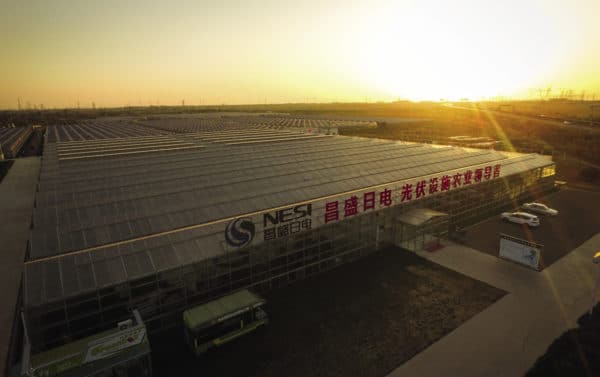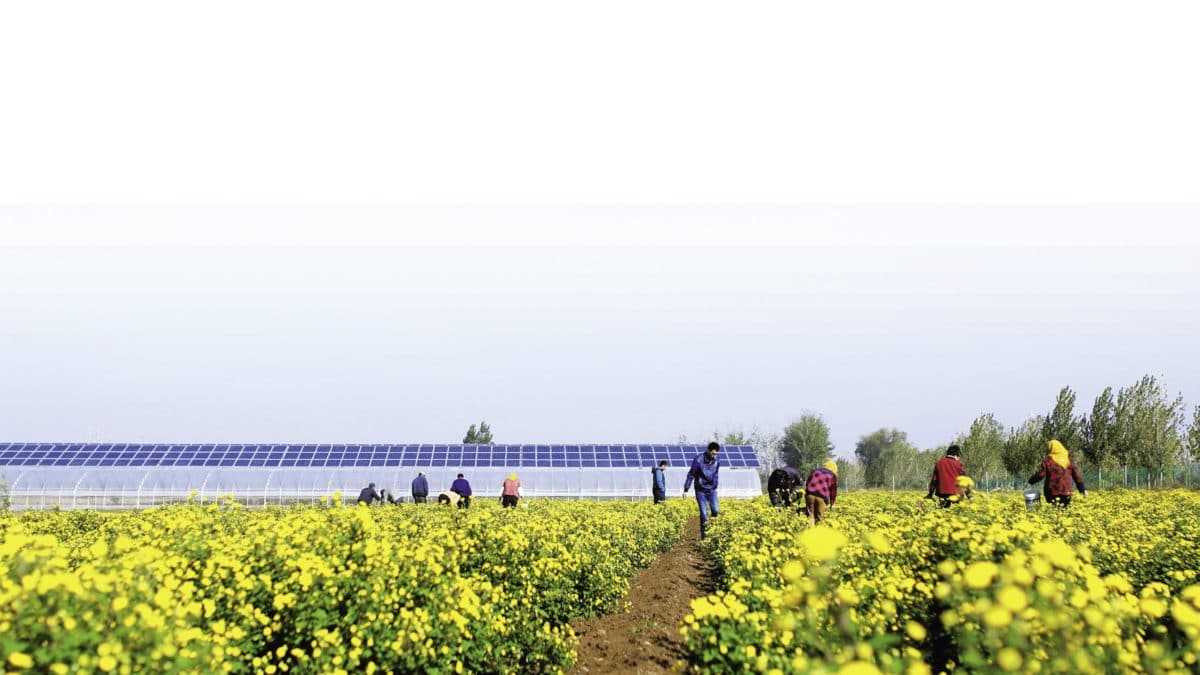The scale of most things in China is astounding, and agrivoltaics is no exception. Current reports estimate 3 GW of agrivoltaics aready installed in the country, with more than 10 GW expected in the years to come. Development to date has been driven largely by government support, which wants to couple more healthy food production with energy generation as a “win-win” for the nation.
One of the companies at the forefront of agrivoltaics in China is Hua Sheng Green Energy Agricultural Technology, part of publicly listed NESI – Qingdao New Energy Solutions. Raysolar, a solar PV module maker that specializes in BIPV, is a part of the NESI group of companies. NESI reports that its subsidiaries have installed more than 1 GW of solar PV on greenhouses in China.
Agrivoltaics is more than just covering greenhouses with BIPV modules. Farming in plastic-tunnel greenhouses is common in China. And while plastic roofing is clearly no place for PV, ingenious structures have been deployed to elevate the PV modules above the plastic sheeting – using the building structure to bear the system weight. While BIPV greenhouse projects are more sophisticated, in terms of integrating modules in the fabric of the building structure, most of the agrivoltaic projects in China are installed in combination with plastic tunnel greenhouses, using standard solar modules.
Real glass greenhouses incorporating BIPV modules comprise only around 30% of all agrivoltaics in China. Still, there is huge growth in glass greenhouses. In the province of Shandong, which I currently call home, 300 hectares of new greenhouses are planned and most of them will be BIPV-powered. Both the elevated arrays on plastic-tunnel greenhouses and BIPV glass greenhouses are termed agrivoltaics or “agrisolar” in China.
State support
As is frequently the case in China, state support is providing the push that agrisolar developers need to succeed with this fast-growing application. The logic behind it is simple: China’s rapidly growing population needs both energy and food security – something agrisolar can provide. At present, China continues to import huge quantities of vegetables and fruit, and the independence from these suppliers is considered a priority by the government.
There is also an increasing drive in China to supply healthier food. As China’s more prosperous middle class grows, so too do their demands for “healthy” food grown in a closed environment, as that helps to decrease the use of pesticides and fertilizers. It’s also important to note that such enclosed environments for food production can greatly increase the crop yield. So, companies that develop agrisolar have the full support of the government to deliver a “win-win” for citizen health and crop yield.
The support from Chinese officials that is facilitating agrisolar projects comes in a number of forms. It is easier for developers to get permits, and financing can also be obtained more quickly. And as solar project developers around the world know, these two conditions, permitting and financing, are essential for success.

Image: Xilia
Rene Moerman
About the author
Rene Moerman is founder of Xilia. He has lived and worked in China for many years. Xilia is a specialist in sourcing solar components from China. Due to Covid-19 travel restrictions and also the dynamic nature of the solar market, many other industries have partnered with Xilia for the sourcing of their solar components. Several module factories outside China source all their raw materials via Xilia. In recent years, more than 300 factories have been audited by Xilia. Moerman was among the handful of non-Chinese visitors to the 2020 SNEC in Shanghai.
This content is protected by copyright and may not be reused. If you want to cooperate with us and would like to reuse some of our content, please contact: editors@pv-magazine.com.
